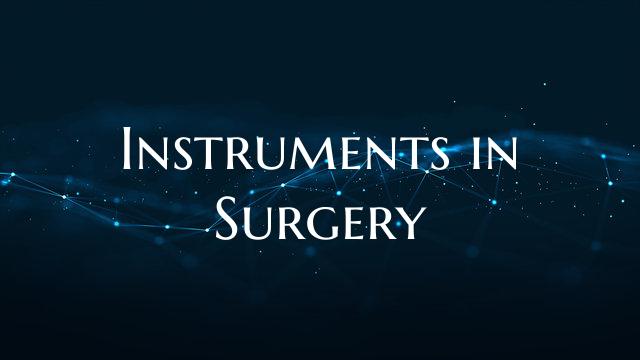Instruments in Surgery
Instruments in Surgery: A Comprehensive Guide
Surgery is a critical aspect of modern medical practice, and the successful execution of surgical procedures depends heavily on the precision and effectiveness of the instruments used. The tools used in surgery serve multiple purposes, from making incisions and holding tissues to suturing wounds and controlling bleeding. The following is a comprehensive guide to some of the essential instruments used in various surgical procedures:
1. Scalpel: The scalpel is a small and sharp knife used for making precise incisions in the skin and tissues. There are different types of scalpels, including disposable and reusable ones, each with specific blade shapes and sizes for different purposes.
2. Forceps: Forceps are handheld instruments with two blades and a ratcheted handle used for holding and manipulating tissues, blood vessels, and other structures during surgery. There are various types of forceps, such as tissue forceps, hemostatic forceps, and dressing forceps, each designed for specific functions.
3. Scissors: Surgical scissors come in various shapes and sizes, with blunt or sharp tips, and are used for cutting tissues, sutures, and bandages during surgical procedures. Some common types of surgical scissors include dissecting scissors, operating scissors, and stitch scissors.
4. Retractors: Retractors are instruments used to hold an incision or wound open to provide better visibility and access to the surgical site. They come in different shapes and sizes, such as self-retaining retractors, hand-held retractors, and wound retractors, to accommodate various surgical needs.
5. Needle Holder: A needle holder is a specialized instrument used for holding and manipulating needles during suturing. It allows surgeons to securely grasp the needle and pass it through tissues to close wounds effectively.
6. Hemostats: Hemostats are clamp-like instruments used to grasp and compress blood vessels or tissues to control bleeding during surgery. They are crucial for achieving hemostasis and preventing excessive blood loss during procedures.
7. Suction Devices: Suction devices are essential for keeping the surgical site clear of blood, fluids, and debris during procedures. They help maintain a clear field of view for the surgeon and ensure optimal conditions for performing surgery.
8. Laparoscopic Instruments: Laparoscopic surgery involves minimally invasive procedures performed with the aid of a camera and specialized instruments inserted through small incisions. These instruments include graspers, dissectors, scissors, and energy devices designed for precise manipulation in confined spaces.
The proper selection and utilization of surgical instruments are crucial for the success and safety of surgical procedures. Surgeons and operating room staff must be proficient in handling these instruments to ensure optimal patient outcomes. By understanding the functions and characteristics of different surgical instruments, healthcare professionals can enhance their surgical skills and efficiency in delivering quality patient care.

